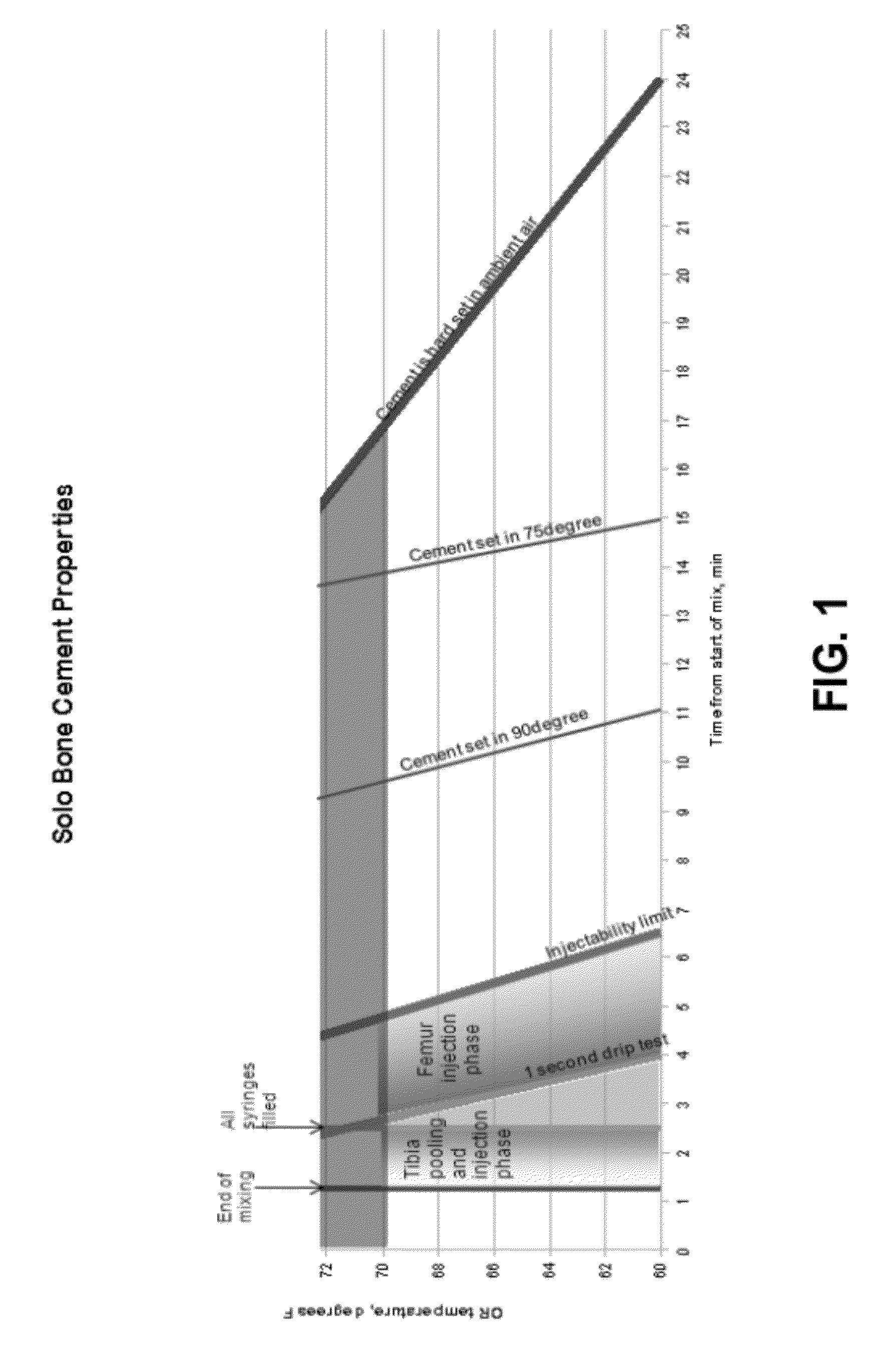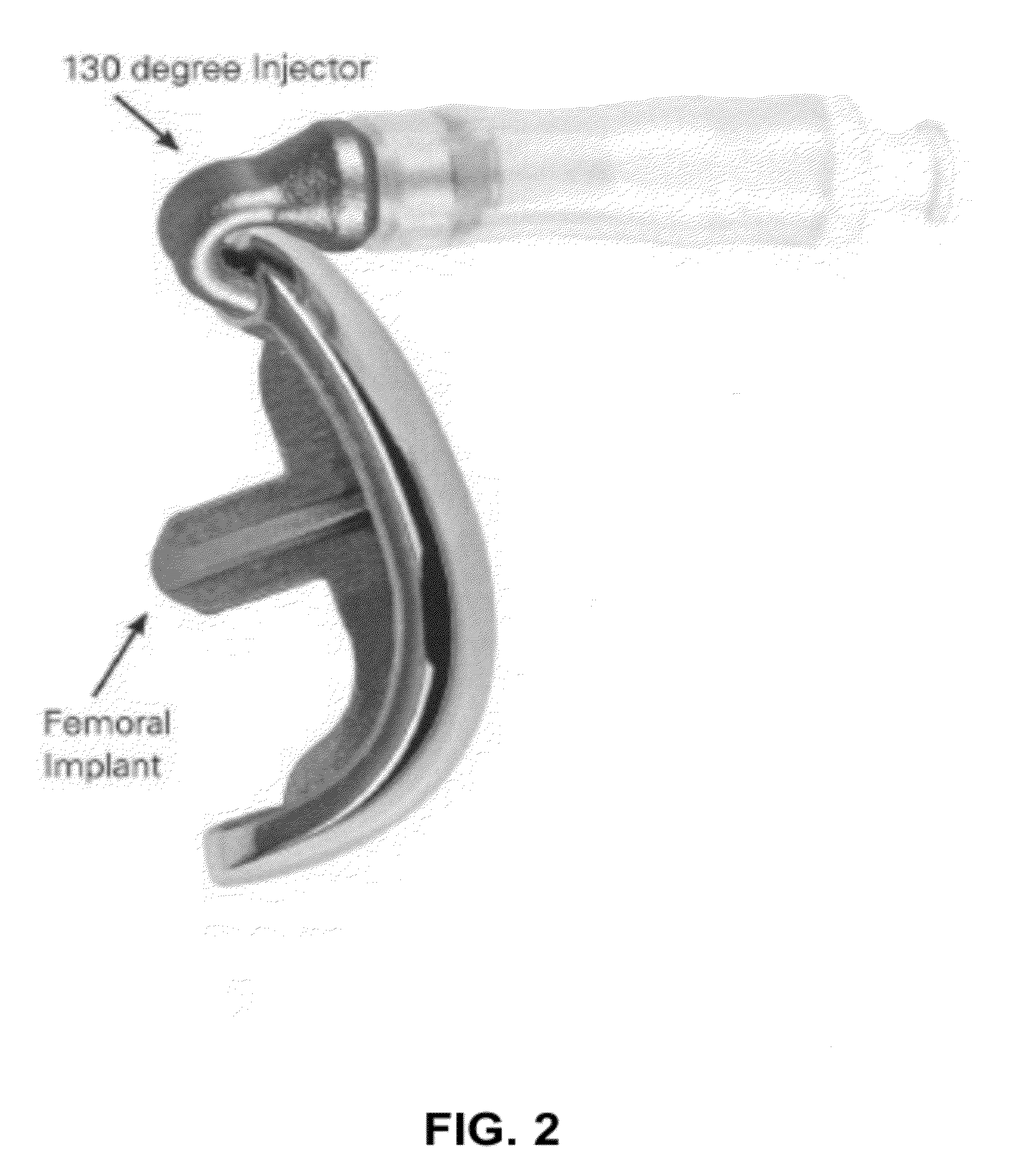Method of implanting a prosthesis device using bone cement in liquid form
- Summary
- Abstract
- Description
- Claims
- Application Information
AI Technical Summary
Benefits of technology
Problems solved by technology
Method used
Image
Examples
example 1
The Effect of Chilling PMMA Bone Cement Polymerization to Prolong Injectability
Summary
[0100]When mixed, polymethylmethacrylate (PMMA) bone cement undergoes an irreversible reaction, eventually hardening into a solid state. The rate of this reaction is largely dependent on the temperature of the components involved.
[0101]Different states of the cement are identified as the reaction progresses, defined by the apparent viscosity of the cement. Since the speed of the reaction is dependent on temperature, the time that the cement remains in a desirable state can be prolonged by artificially decreasing the temperature. In order to more closely study the effect of chilling the cement to prolong the previously defined “injectability” state this series of tests was carried out to appropriately define a protocol and limitations regarding chilling cement in a clinical situation.
[0102]The objectives of this study are to define a limit, if any, to the effectiveness of using an ice bath to limit ...
PUM
 Login to View More
Login to View More Abstract
Description
Claims
Application Information
 Login to View More
Login to View More - R&D
- Intellectual Property
- Life Sciences
- Materials
- Tech Scout
- Unparalleled Data Quality
- Higher Quality Content
- 60% Fewer Hallucinations
Browse by: Latest US Patents, China's latest patents, Technical Efficacy Thesaurus, Application Domain, Technology Topic, Popular Technical Reports.
© 2025 PatSnap. All rights reserved.Legal|Privacy policy|Modern Slavery Act Transparency Statement|Sitemap|About US| Contact US: help@patsnap.com



